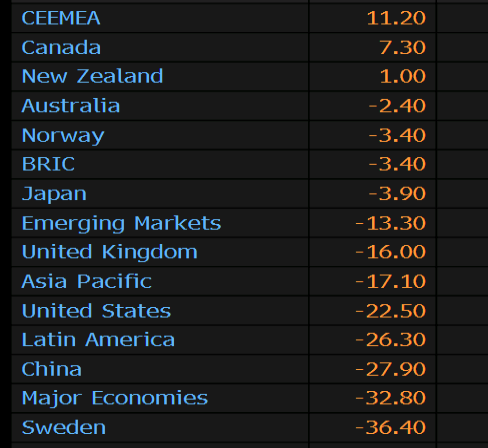

At the end of October, the index stood at -16.1, suggesting indicators have recently been disappointing. When the index is below zero, it means the constituent indicators have been coming in under anticipated levels, on balance, and vice versa. Calculated over a three-month rolling window, the index weights its constituent indicators based on how strongly positive or negative surprises in them have affected financial markets in the recent past. It, therefore, reflects analysts’ shifting optimism or pessimism and where they’ve been caught wrong-footed in their expectations. Rather, the index captures how economic indicators are coming in relative to investment analysts’ expectations. The graph below shows the CESI can be volatile, but that’s not necessarily because of the fits and starts of real economic activity.


Looking forward, the CESI now suggests bond yields could be relatively stable in the near term. A review of the recent trend in the CESI shows it pointed to a drop in bond yields over the summer, despite investors’ growing concerns about rising inflation and Federal Reserve interest-rate hikes. In this class, we would include the Citigroup Economic Surprise Index (CESI), which tracks whether a core set of economic data series has been coming in under expectations, at expectations, or over expectations. Other indicators are indexes composed of multiple data points, and they can point to future financial market performance as well. Some indicators are strongly correlated by themselves, with performance yardsticks like stock prices, dividend yields, or bond yields. We publish asset allocation thoughts on a weekly basis in this report, updating the report every Friday, along with an accompanying podcast.Īs market strategists, we’re always on the lookout for reliable indicators of future financial market performance wherever we can find them. Confluence Investment Management offers various asset allocation products which are managed using “top down,” or macro, analysis.


 0 kommentar(er)
0 kommentar(er)
